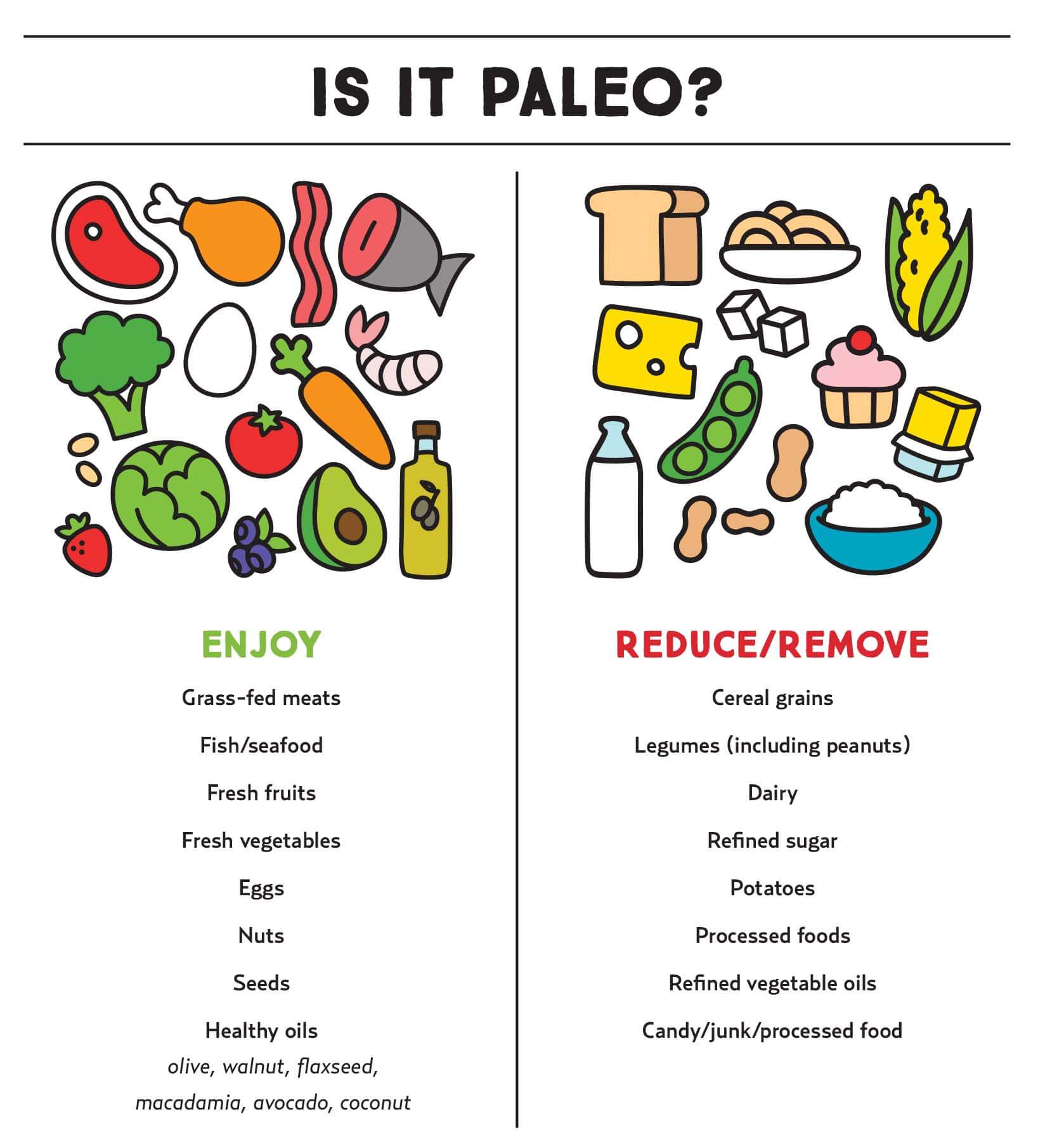The Paleo style of eating is very popular today. This popularity has been driven by athletes, especially in the CrossFit community, and now it’s even being embraced by top-level athletes and couch potatoes alike.
I’m generally not a big fan of diets or programs, mostly because they tend to be unsustainable. But, admittedly, this is the one style of eating I’ve recommended more often than any other.
It’s not because it’s a perfect way of eating nor is it one that everyone should follow, but it does serve a purpose for certain people at a certain time. More on that in a minute.
The Paleo Diet, in a nutshell, is meant to mirror a Palaeolithic hunter/gatherer diet. It includes lots of wild/grass-fed meat, veggies, fruit, nuts, and healthy fats, and excludes all sugar, grains, dairy, beans, and processed food. I see it as a healthier version of the ‘90s fave Atkins Diet.
So, who is this diet good for? Because it’s a higher protein and lower carb diet, it’s great for athletes (that’s why it’s so popular with CrossFit), and it’s good for anyone trying to manage their blood sugar. It eliminates refined sugars and flour but isn’t entirely starchy carbohydrate-free. You can still enjoy fruit and root veggies.
This style of eating isn’t for everyone. It can be difficult to follow any diet for the long-term, and losing weight and then gaining it all back can be really hard on the body.
If you’ve tried other diets before and you’ve struggled to keep them up, I wouldn’t recommend following any diet, including this one. What would work better is a lifestyle-shift: slow changes, made over time, that you can easily sustain. That’s how real long-term health is created, and the Nature’s Fare Nutrition Team can help you if you’re struggling.
A word on the Ketogenic Diet
This diet is mega popular right now. Many websites and health experts are promoting this type of diet as a miracle fix for many issues (and making a lot of money doing so, by the way). This diet is similar to The Paleo Diet but much more restrictive. It removes all starches and lowers carbohydrates to no more than 5% of one’s diet while increasing fat to 60 to 80%.
This creates a metabolic change and instead of burning glucose for fuel, we go into ketosis and start to burn fat for fuel.
This diet has been used medicinally for decades, mostly for epilepsy and some types of brain cancer. But, in the past, it was always medically-supervised because it’s a very hard diet to balance nutritionally. Fat isn’t overly vitamin- or mineral-rich, so you can be prone to deficiencies.
I don’t have the medical training to debate whether or not being in ketosis for a long period of time is okay for the body. But, I do have a very unpopular opinion on this very popular diet—I don’t like it. I feel that it should be kept as a medicinal diet, to help with very specific conditions, and not followed by the average person.
The reason is this: it’s very hard to maintain. It will, without a doubt, trigger weight loss, but you have to stay in ketosis to keep losing weight. And, as we saw with the less restrictive Atkins Diet, the weight comes back once you go back to your normal life. Diet perfection is a very hard cross to bear.
And to the argument that this is easy to follow forever? Well, ah, I don’t quite believe that. If so, we’d see lots of people still following the Atkins Diet. But there are very few, if any.
To sum it all up, if you feel really good when you’re eating a high protein diet, check out the hundreds of Paleo websites for some fantastic and healthy recipes. Keep in mind, you don’t need to follow this diet perfectly, but it can add some wonderful new flavours and food ideas to your day-to-day diet.
Lisa Kilgour is a Registered Holistic Nutritionist (RHN), and a faculty member at the Canadian School of Natural Nutrition. While many nutritionists focus on just food, Lisa sees it as just one of those puzzle pieces. She truly believes how we care for ourselves: our emotions, gut flora, sleep, stress, and of course, the food we put into our bodies, all work together to help us heal. Her mission is to help you find those missing pieces and give you the skills you need to solve your puzzle once and for all. Learn more about Lisa: lisakilgour.com
Article was published in The Good Life magazine.


